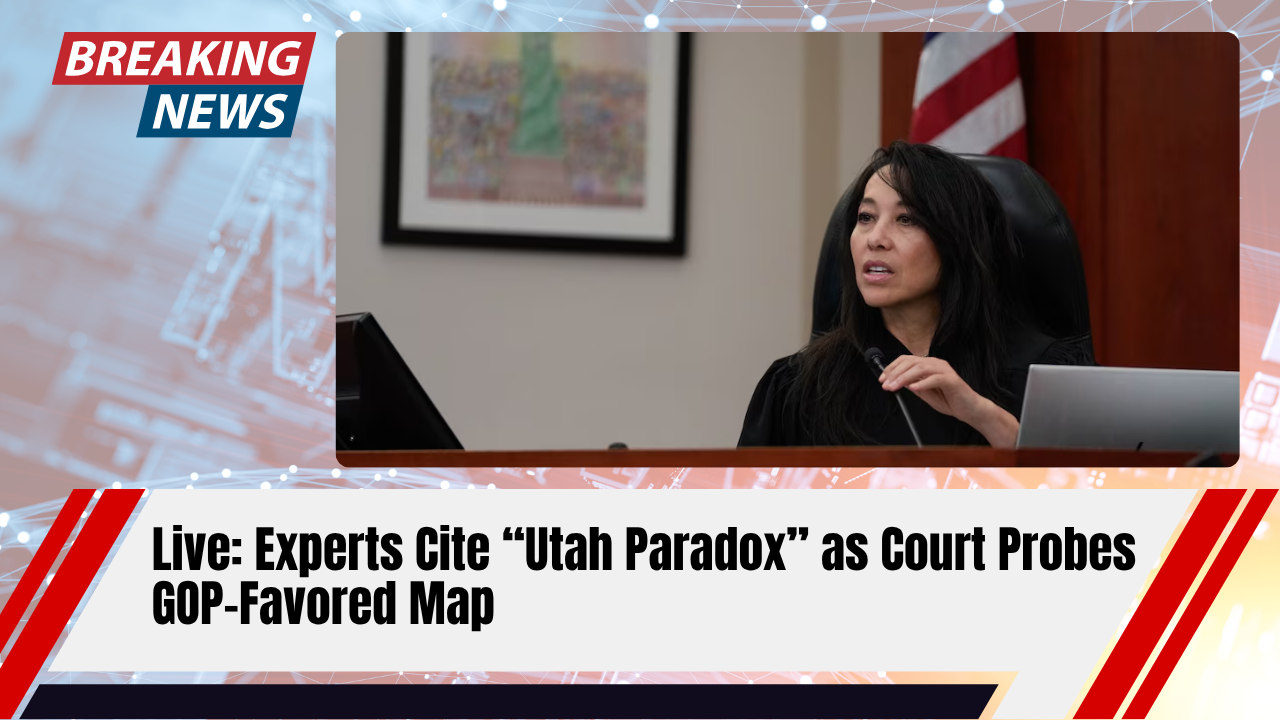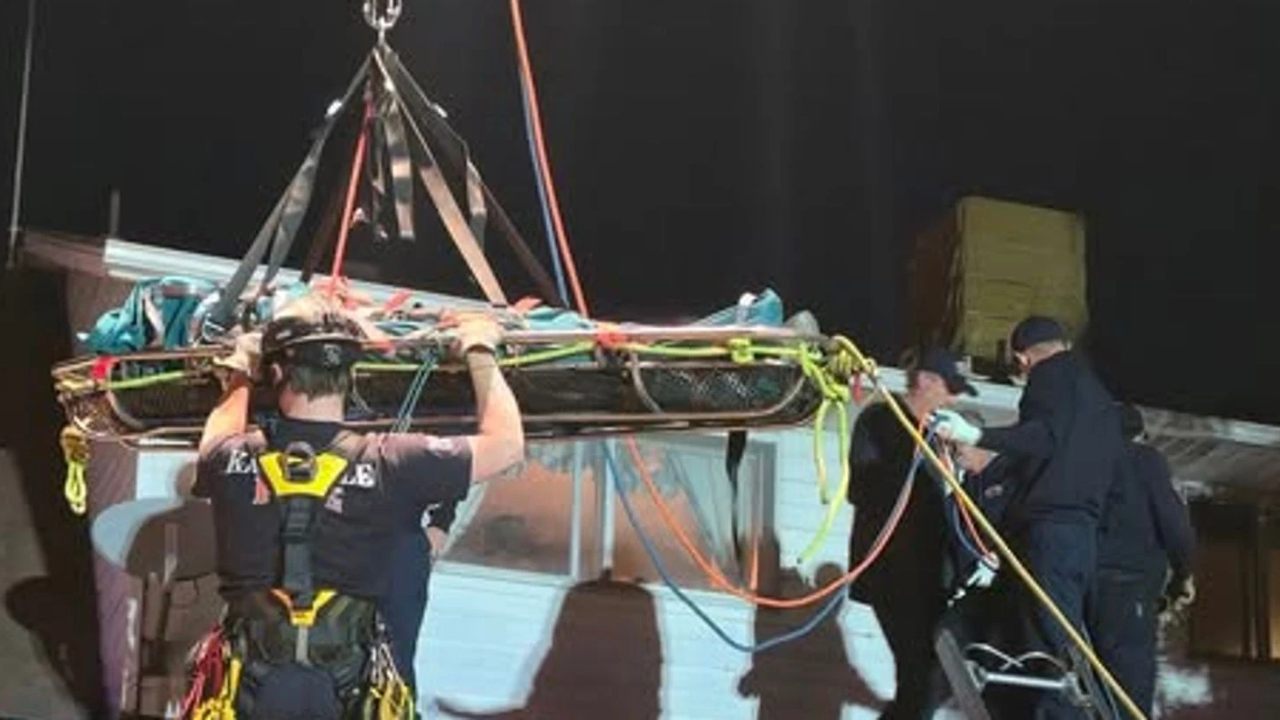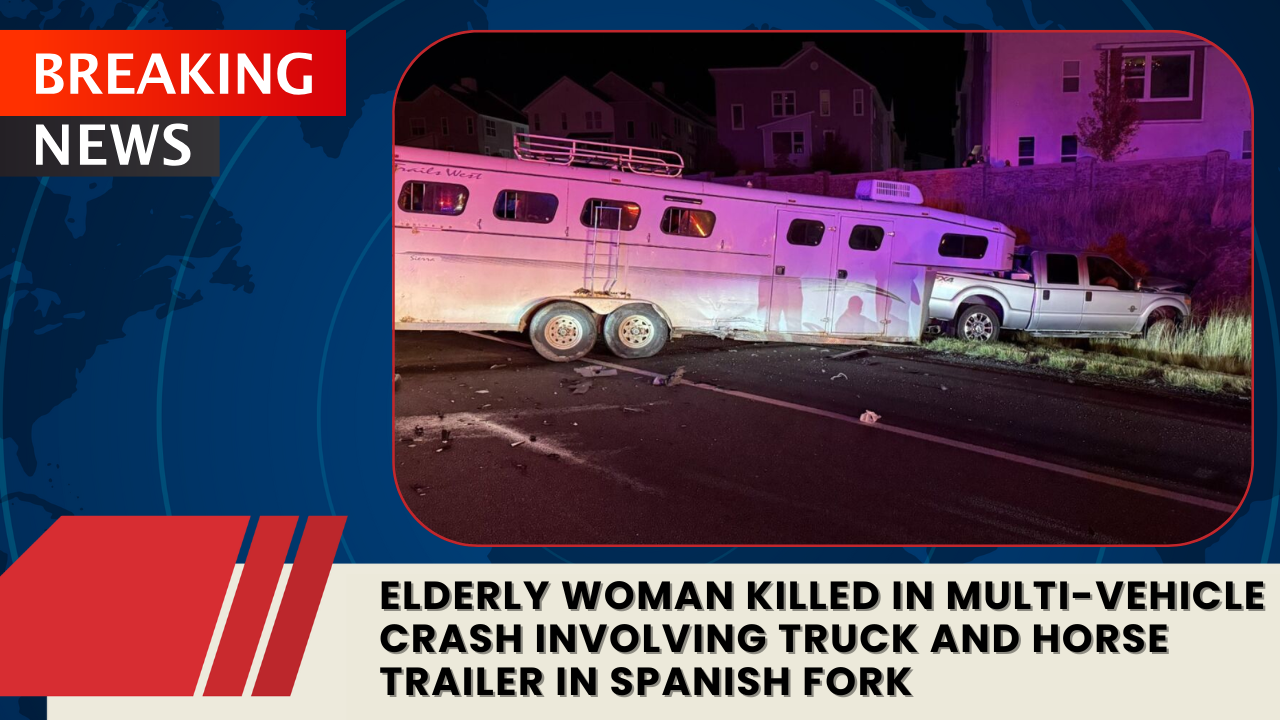Utah’s high-stakes redistricting fight opened with sharp testimony accusing state lawmakers of adopting a congressional map that bakes in a four-seat Republican sweep. Across a day of live updates, scholars walked Judge Dianna Gibson through why Utah’s chosen tests for detecting gerrymanders can misfire in a one-party-dominant state — a dynamic academics dub the “Utah paradox.”
10:30 a.m. — Plaintiffs’ first expert calls the map an extreme outlier
University of Michigan political scientist Jowei Chen said the Legislature’s plan “cracks” Democratic voters across districts, producing four reliably Republican seats. In a 10,000-map simulation constrained by Utah’s neutral criteria, more than 99% of the maps created at least one Democratic-leaning district; only a handful yielded a 4–0 GOP outcome. Chen argued that the Legislature’s preferred “partisan bias” test systematically passes Republican-tilted plans and fails competitive or Democratic-leaning ones in Utah’s electorate.
He also criticized comparison sets generated by the Legislature’s expert, Sean Trende, noting excessive county splits and weak compactness — both contrary to Utah’s standards — which, he said, mechanically increase the chances of four GOP seats.
11:20 a.m. — Algorithm debate and Salt Lake County at the center
Under cross-examination, Chen defended his algorithm, noting he shared code, published on it, and had courts accept his testimony in prior cases. He said the geography around Salt Lake County naturally yields a district in the county’s north under Utah’s criteria — keeping Bluffdale and Draper together in the south while the Great Salt Lake caps the north. Chen also asserted that a large share of maps produced by a Legislature expert were duplicates, while another expert’s coding treated Salt Lake County differently from other counties, leading to repeated splits that favored Republican plans.
1:50 p.m. — The “Utah paradox” explained
Georgetown University’s Chris Warshaw testified that Utah’s statutes enshrine tests that are ill-suited to noncompetitive states. Applied to Utah, the partisan bias formula can label Democrat-favoring maps as “pro-Republican gerrymanders,” while four-GOP-seat maps pass. He called the mean-median test “among the worst measures” for Utah, where Democrats can realistically win only one seat; the test focuses on mid-ranked districts that aren’t truly in play. Warshaw urged using multiple metrics, noting that no single test is flawless with just a few districts.
4:05 p.m. — Map tweaks and community trade-offs
Plaintiffs’ witness Kassra Oskooii (University of Delaware) described improvements he made to competing plans, including removing a split in North Salt Lake and keeping Millcreek whole by moving Bluffdale to District 3. Legislative counsel countered that some fixes would yoke distant rural counties and questioned whether Oskooii prioritized school-district or county-council boundaries. Oskooii said those “communities of interest” matter, but equal population, contiguity, and compactness come first.
Voters’ perspective: Feeling carved up
Millcreek residents Malcolm and Victoria Reid, individual plaintiffs, told the court they supported 2018’s Better Boundaries initiative to ensure consistent representation. Millcreek was previously split four ways; under the Legislature’s latest map it’s divided into two districts. The Reids said repeated splits dilute their voice even though they can vote.
What Judge Gibson must decide — and when
Judge Gibson is weighing three plans — the Legislature’s and two plaintiff proposals — against Proposition 4’s standards. A final map is due by Nov. 10 to give county clerks time to prepare for the 2026 midterms. The Legislature’s experts are set to testify next, defending the enacted plan and the analytic framework Utah chose for detecting gerrymanders.



